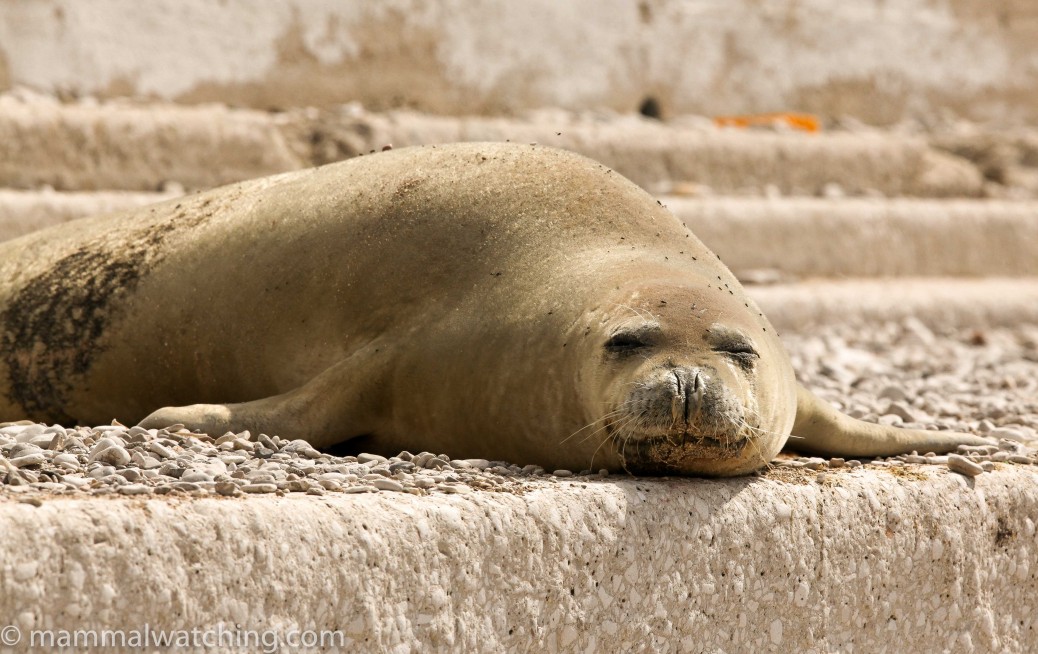
Croatia
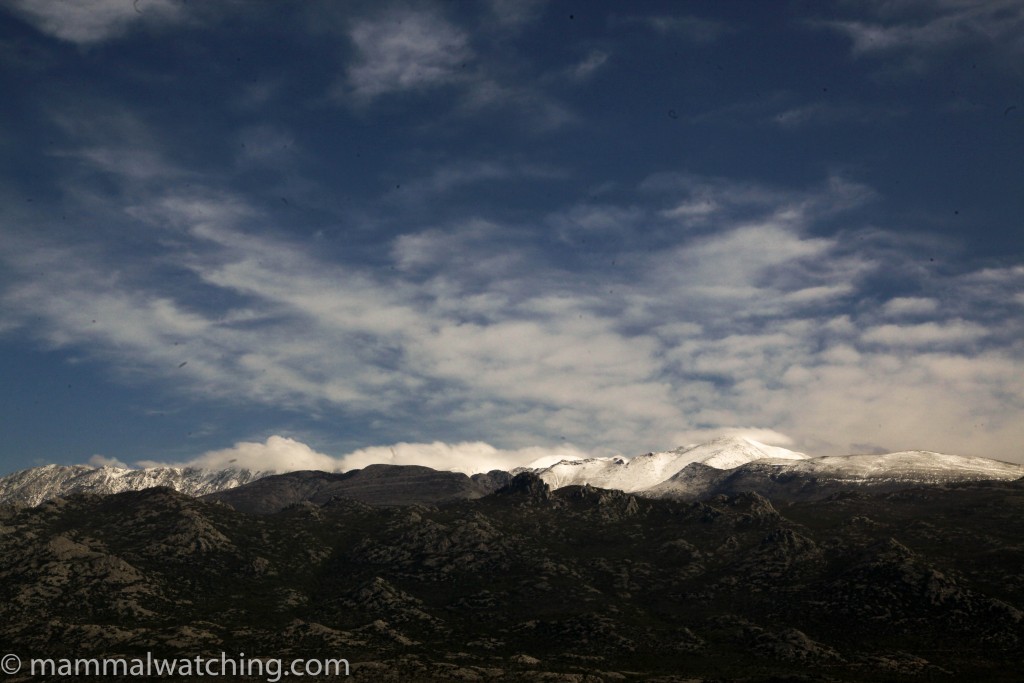
Velebit Mountains, north of Zadar
In Easter 2014 my plans for a trip to Peru were delayed at the last minute when my daughter broke her arm, which meant I had to travel to France to see her. So with a week’s preparation, and on the basis of a brief article on a Mediterranean Monk Seal spotted near Pula, I decided to take the kids on a road trip to Croatia in search of a Monk Seal. We visited two places for wildlife: the Istrian Peninsula for the seal, and Risnjak National Park, in the north west, where there was a remote possibility of seeing a Lynx.
I was very pleasantly surprised by Croatia: the scenery, food, and, most of all the people, were great. In retrospect I am not sure why I was surprised. I know quite a few people from the region and like them all. Definitely somewhere to return to (and I did 6 months later though didn’t look for mammals the next time).
Risnjak National Park
We visited here on a whim, after Frans De Schamphelaere got in touch with me to recommend the park. It’s a pretty – and pretty quiet – spot in the mountains on the Slovenian border. Risnjak means “den of the Lynx” and is home to a number of mammals including Brown Bears, Wolves and a few Lynxes.
The park has a hotel at the entrance, which judging by the food we had there should be good, plus another nearer the summit that hadn’t yet opened for the season in April. They also have a basic house – called “Lazacs” – in a remote bit of the park that is set up for game viewing. We spent a night there. There is little in the house, other than pillows and blankets. It does have electricity and firewood (for stoves in the bedroom and a grill outside). And there is running water but it isn’t potable. The scenery is awesome.
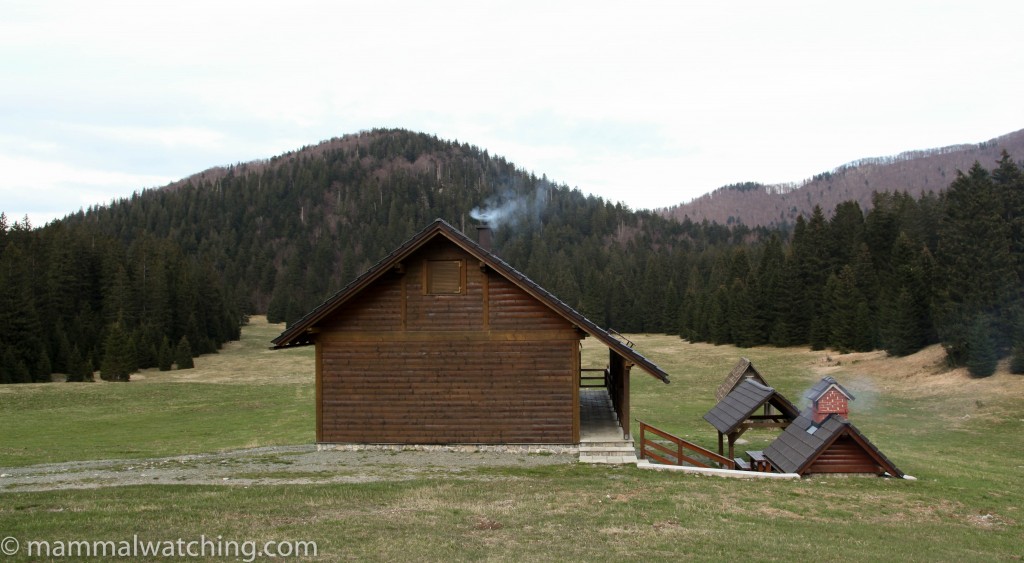
The house at Lazacs
A winter ice storm a few months earlier meant a lot of trees had come down and the road to the house was shut. So we had to get a 4WD ride with the ranger on a 20km detour to drop us at the house. In fact I think my little hire car could have made the trip, and this would have been a better choice as we could have gone spotlighting.
We set a few small mammal traps and caught nothing. Nor did we see any mammals, other than a Red Squirrel crossing the road as we drove back to the park gates, though I didn’t put much effort into looking.
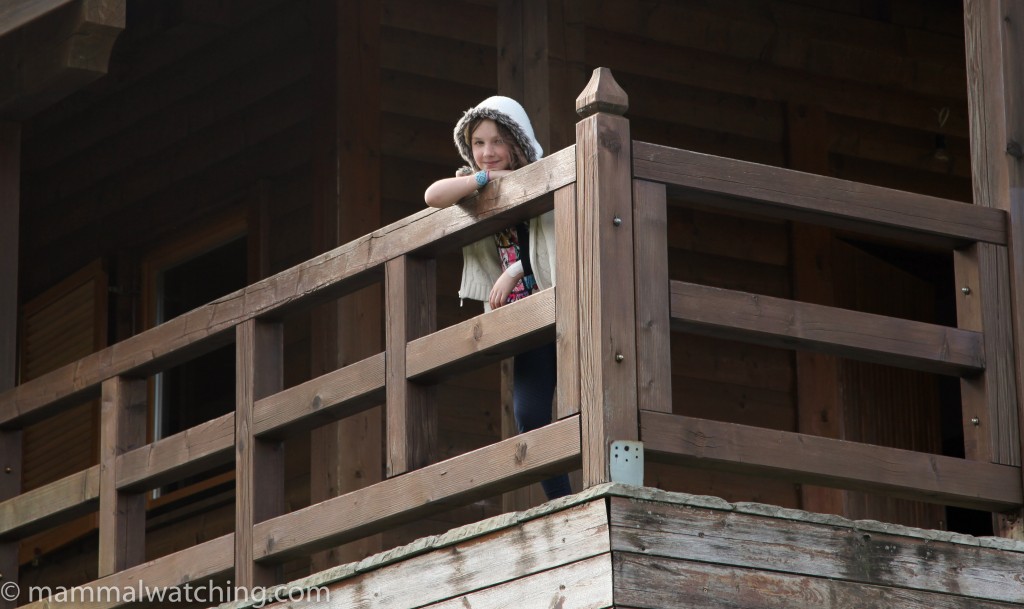
Katy on bear lookout duty
Bears are frequent visitors in the summer: the rangers leave corn for them close to the house, but the animals, fresh out of hibernation, hadn’t yet gotten reaccustomed to the food this year. Deer are also often seen, and Wolves are occasional visitors. The ranger had seen 10 Lynxes in 20 years in the park. Always at night and always on the road.
The park website has some more information and you can book the house or hotel by email too.
Istrian Peninsula
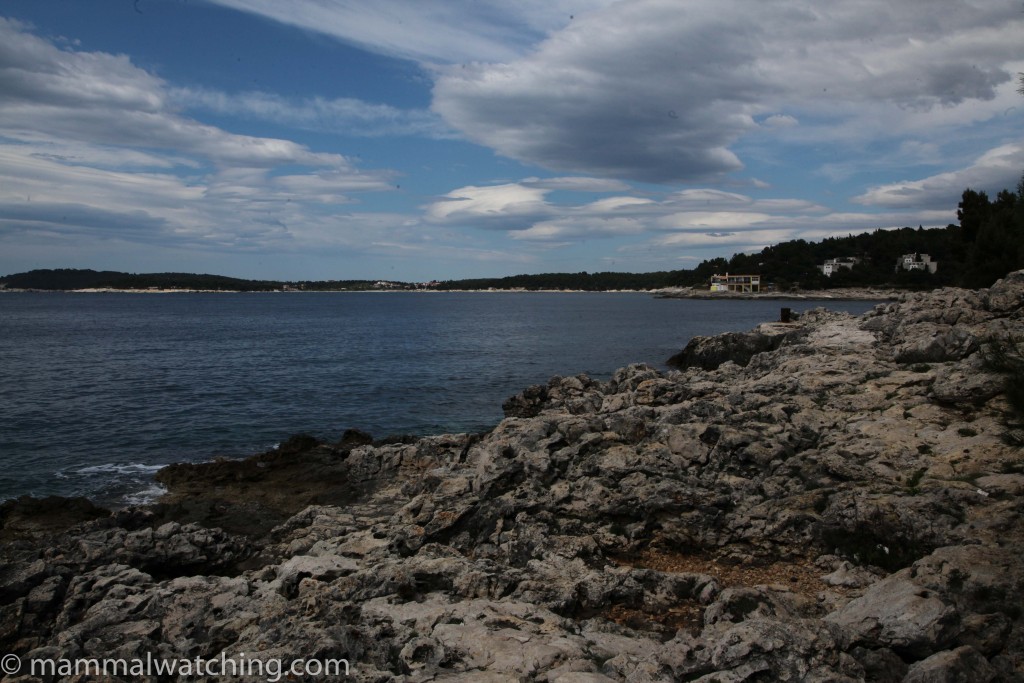
I’ve long wanted to see a Mediterranean Monk Seal but they are an elusive beast. I failed to see them in Turkey in 2006, and couldn’t get any reliable information on whether they occur in Algeria despite several attempts to find out. And it seems that the Mauritanian colony is pretty much impossible to visit unless you know an officer in the Mauritanian navy (the seals are next to a naval base). So my ears pricked up when I read news that a seal had been “entertaining” people near Pula in Croatia in late March. I couldn’t get any more information, so I decided to visit.
My few days on the Istrian peninsula captured the highs and lows of mammal watching. The Monk Seal saga could have been straight from the script of 24. At least it could have been if the Monk Seal had been carrying a nuclear weapon that was intended to be launched at a major US city and I had satellite intelligence on where the seal was.
Day 1
My first stop was the Kamenjak peninsula just south of Pula, where a group of seal were reported to be living. I didn’t expect to get much information easily but I hadn’t counted on how helpful Croatians are, nor on the seals’ fame. I stopped for a coffee and asked the café owner about the seal. Though few Croatians know the English word “Seal”, it is an easy species to impersonate. So after ,some hand clapping and “huuuuooo huuuoooo huuuooos” the café proprietor appeared to understand. The seal, he said, was in a place called Valkane, a beach west of Pula town. He drew me a map. Somewhat skeptical about this I drove the route he had sent me noting I was heading to the town aquarium. I began to suspect he was sending me to a sealion show.
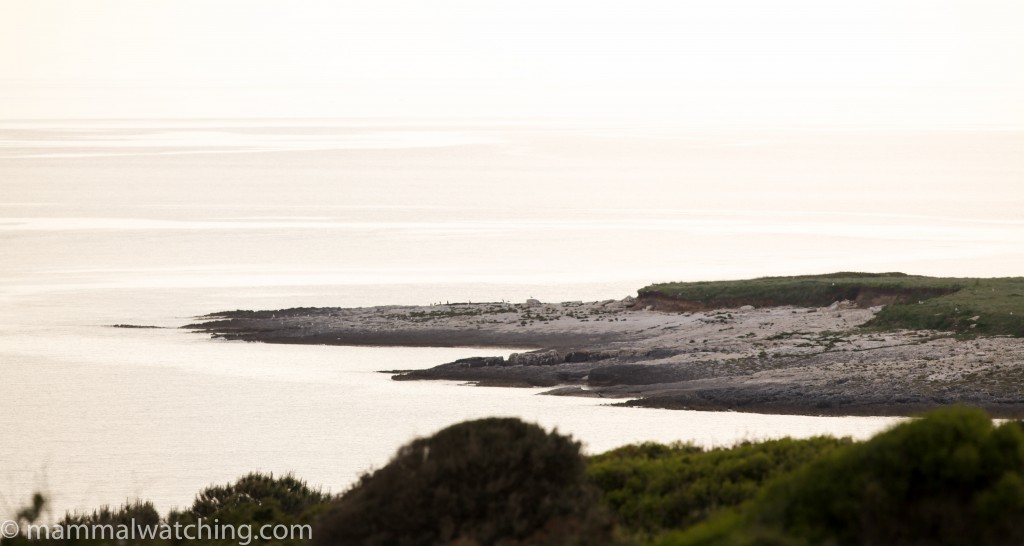
Kamenjak Peninsula
Although I couldn’t find Alkane Beach, I stopped in a campsite near where I though it was. The staff spoke perfect English and confirmed that the seal had been in the area on and off for several weeks and marked a map with the beaches they had seen it on. When the seal came ashore it was usually surrounded by staff from the environment ministry. Jasna, from the campsite, then called the parks department for me, and got the number of a guy called Claudio. Claudio was monitoring the seal and promised to call back. An hour later he phoned back to say the seal was still in a cave on the Kamenjak peninsula where it had been holed up for 3 days. He promised to let the campsite know if it hit the beach again. The campsite said they would email me if they got news.
So I drove south to the town of Zadar for the night.
Day 2
The next morning I called the camp on my way back north to Risnjak National Park. They had had no news. I still had 3 nights in Croatia so was optimistic the seal would return to a beach.
Day 3
No news the following day – Easter Saturday – and I began to get concerned. Still no word from the campsite so I drove back to Pula to talk to them. They hadn’t heard from the researchers so I asked them to call the environment ministry. They did. The ministry was shut for the weekend. And the camp site couldn’t find the piece of paper with Claudio’s cellphone number (why, I thought to myself, hadn’t I taken a copy).
Trying not to be too disappointed, I decided to try to get back on the trail by driving to the Kamenjak peninsula to see if anyone there knew anything. But the entrance booth to the park was shut. As was the gift shop. Disaster.
I drove down to the tip of the peninsula, weaving my way through hordes of German cyclists, and decided on a beer to calm my nerves at the Safari Bar. I mentioned the seal. Marco, behind the bar, said “Oh I think it is in a cave, 80 metres from here” and pointed towards the ocean. The beer went down fast and I was off to the low cliffs behind the bar. The cave was easy to spot. It had a big Monk Seal sign above it, along with details of the fine I would incur if I harassed the seal. It was not, however, all that easy to see inside. By clambering down the cliffs and clinging to the side, I could shuffle along a narrow ledge and look part way in. No sign of the seal. I figured it was just out of sight, and I was ready to take a swim to find out, but thought I would go back to the bar first to check on what else they knew.
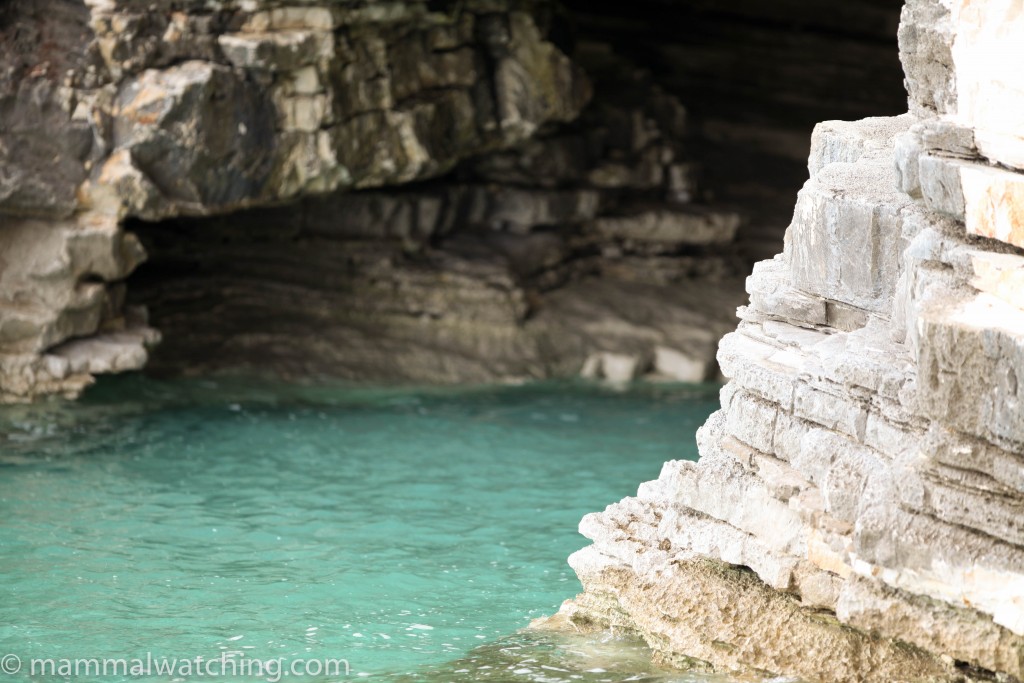
The Monk Seal’s cave
Marco took a break and explained that the cave was monitored with a camera, and that the Italian scientists had confirmed that morning that the seal was inside. He came down to the cave to look inside: it seems that when the seal is inside it is usually hauled out on the pebbly beach inside the cave, which can be seen from the ledge I’d stood on. We still weren’t sure though, until a surf skier paddled past and confirmed that the cave was seal-less. Dammit.
Back at the bar Marco called Jasna Antolovic, biologist, founder and leader of an NGO The Mediterannean Monk Seal Group – Association. She was in town from Zagreb, and planning to check on the seal the next day. So I arranged to meet her back at the Safari Bar at 10am.
Day 4
Jasna arrived on time. I was 45 minutes early after a restless night. She confirmed the seal had gone from the cave. Dammit again. She also explained that her NGO had been working for 20 years, and had been systematically exploring caves that could be Monk Seal habitat for the Croatian Adriatic. They also also monitor species sightings and work to educate local people, especially fishermen and children in a project “The Sea is Live“. Systematic monitoring of the Monk Seals began in 2005 on the east and west coasts of Istria, and especially on Cape Kamenjak. A Monk Seal can be seen daily on beaches in the west of Istria, and they monitor her behavior using cameras, and she sent me the image from the camera near the Safari Bar.

Remote monitoring picture of the seal
I had only a few hours left before I had to drive back to France. The tension was growing. And then her phone rang. The seal was on the beach at Valkane. We’d come full circle. So slightly less quickly than Jack Bauer would have – and I would have wanted to – we finished our coffee and Jasna led the way to Valkane, which was indeed just up the road from the Stolja campsite. And the seal was there, hauled out on the beach.
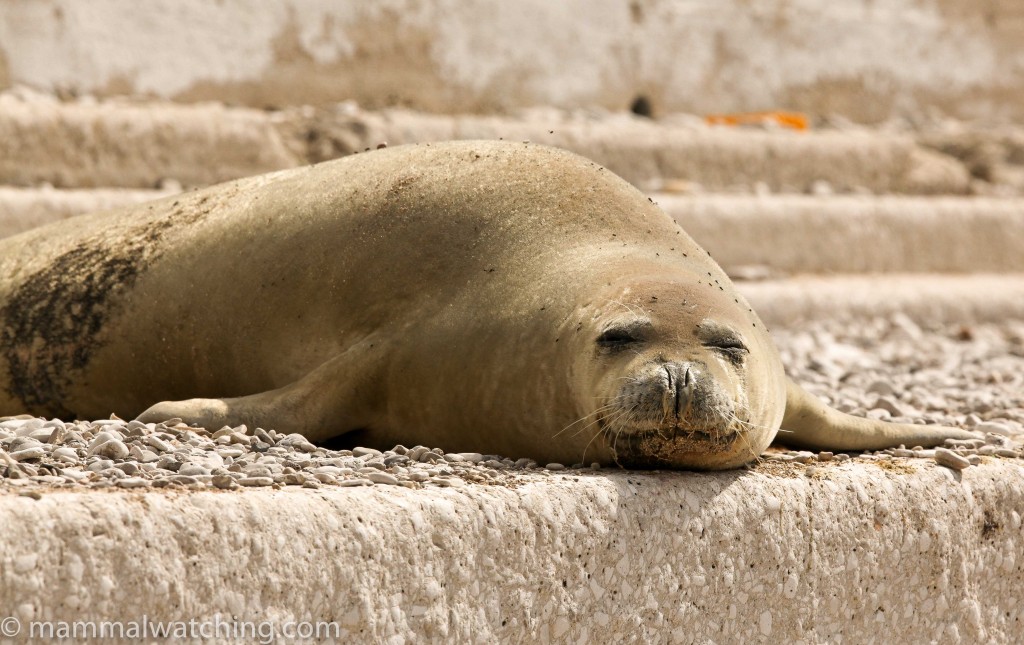
Mediterranean Monk Seal, Monachus monachus
So my two very excited kids and I spent an hour watching the seal on the beach, in the water, and back on the beach again. It gathered quite a crowd. What a thrill to see the world’s rarest seal and one of Europe’s most endangered species.
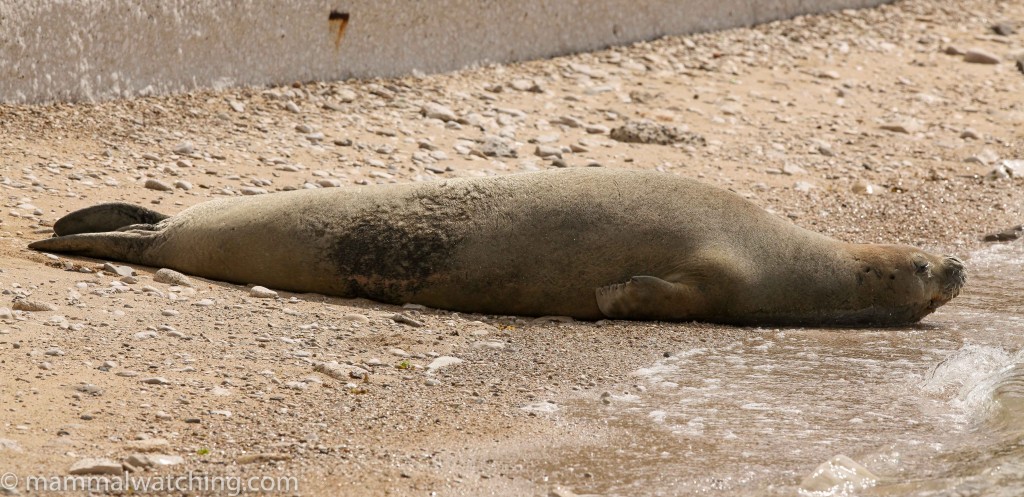
Mediterranean Monk Seal, Monachus monachus
If it wasn’t for the ridiculous helpfulness of people in Croatia I would never have seen it – I honestly can’t imagine getting so much help from strangers in any other country I’ve ever been. Thank you again to all of those who gave up time to help, especially Jasna Antolovic.
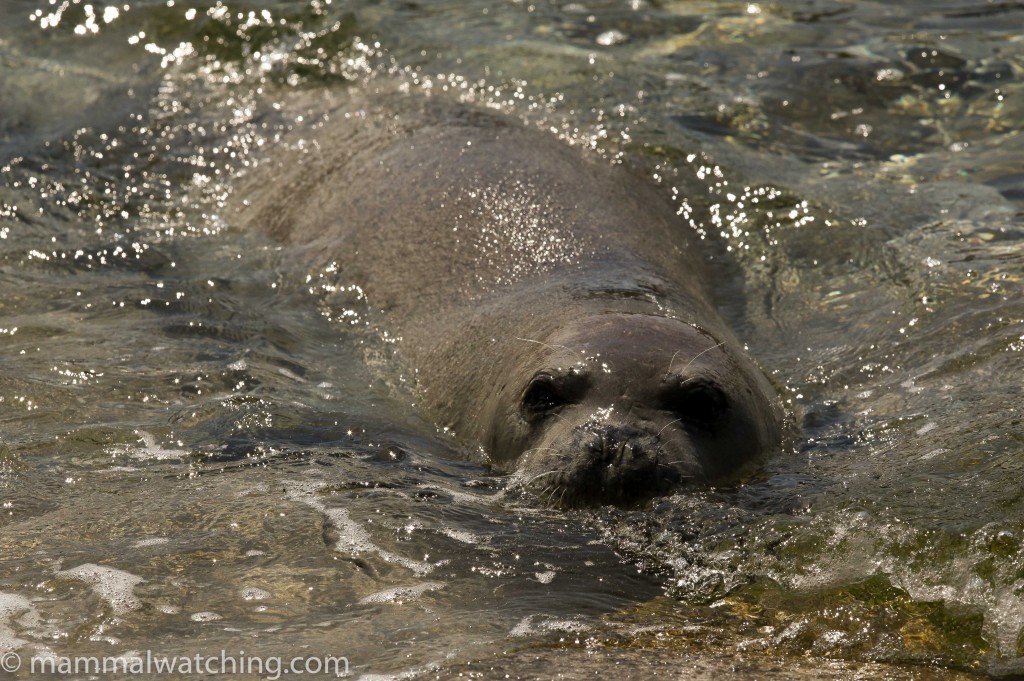
Mediterranean Monk Seal, Monachus monachus
Community Reports
Mosor and Biokovo Mountains, 2019: Ralf Bürglin, 4 days in search (successfully) of Balkan Chamois, Mouflon and Aoudad.
Slovenia and Risnjak NP, 2017: Mike Hoit, 3 days & species including Edible and Forest Dormouse, Beech Marten and Brown Bear.
Slovenia and Risnjak NP, 2017: Ralf Bürglin, 10 days & 15 species including Brown Bears, Beech Marten and Mediterranean Horseshoe Bat.
The Balkans, 2016 (and some flashbacks to the early 1990s): Vladimir Dinets, 6 weeks and 100+ mammals including Martino’s Snow Vole, Romanian Hamster, Western Broad-toothed Mouse, Bicoloured and Etruscan Shrews, a Mediterranean Monk Seal and European Polecat.
Italy and Croatia, 2014: Mike Richardson & Sarah Winch, 8 days & 14 species including Mediterranean Monk Seal, Beech Marten, Striped Field Mouse, Alpine Ibex and Chamois.
Also See
Please email me if you have tips for mammal watching in this area.


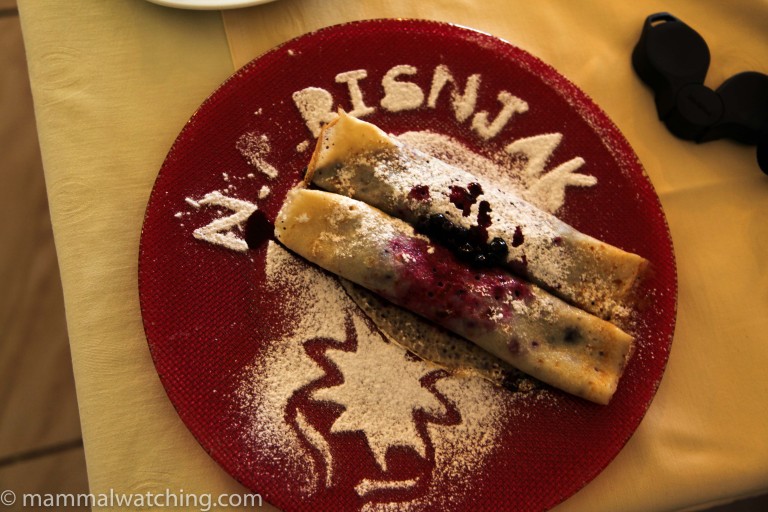
Leave a Reply
You must be logged in to post a comment.